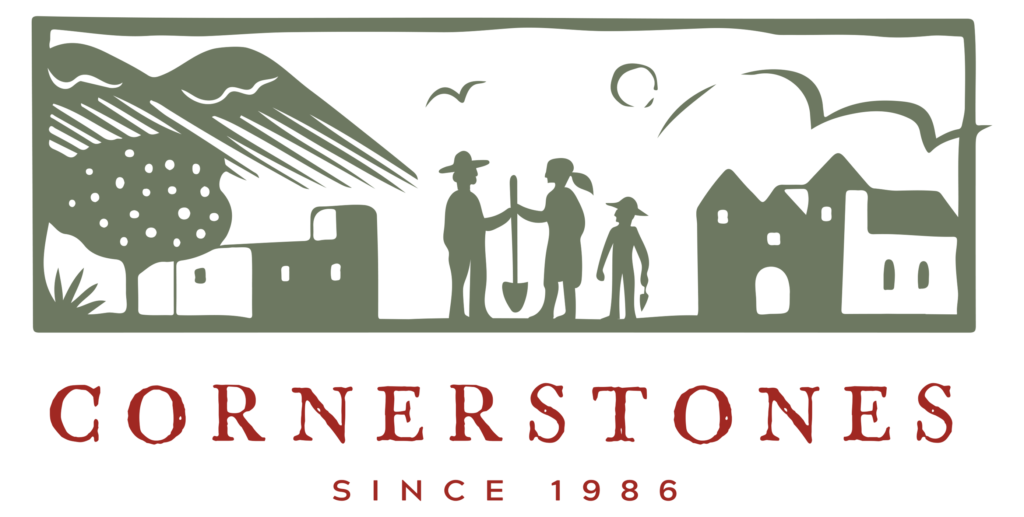Loyal readers of the Mud Blast know that in 2019, the Bureau of Land Management engaged Cornerstones to do a Historic Structures Report and ongoing maintenance of Rael Ranch. As part of that work, Susan Buck, a Conservator with expertise in architectural materials visited the property with our team. She conducted cross-section paint microscopy to begin to understand the story of the changes to the structure over time.
One of the major parts of maintaining the property is keeping the acequia (communal irrigation ditch) clear. This is no small task. The Rael Acequia is more than a mile long. I spent a winter afternoon walking the acequia with Issac Logsdon, Cornerstones’ Project Manager for Rael Ranch. This acequia contains some ambitious engineering. I was particularly impressed with the places where it hugs the steep side of an arroyo.
The health of the Rael Acequia is integral to the historic character of the Ranch. When you drive up to the property one of the first things you see is a hand lettered sign “Rael Ditch circa 1718.” Cornerstones hopes to revive a historic fruit orchard that currently on the property. This ditch is essential to that goal.
Throughout the year, Issac does a great deal of work maintaining the acequia. The day I walked with him, he broke up ice dams at the head gate. However, the clean up in advance of the spring opening requires a lot of labor. The group pulls weeds, shores up eroded walls and shovels out sand….lots and lots of sand.
Photo by Barb Odell
The history of acequias and their annual spring cleaning spans many centuries. The Spanish formally organized settlers into ditch associations in the 16th century AD, but Native American people were watering their crops in the Southwest using irrigation systems at least as far back as 800 AD.
In some communities, the ditch associations became part of the municipal government. In small rural communities the ditch associations were the municipal government. As such the spring cleaning was a big annual event. All members of the community were required to contribute in some way. After the clean up, the head gates were opened and water crew followed the first flow of water. Communities often came together for blessings and celebrations.
Today, by New Mexico law only properties that have three or more land owners with water rights can form a ditch association. Rael Acequia is a private ditch because there are only two water rights landowners. So, Issac recruited teams of (socially distanced and masked) volunteers to work on the project with him. I like to think that that group of volunteers that worked to clean out Rael Acequia over the last few weeks are Cornerstones’ community. People working together to keep this precious water resource running and the tradition of the acequia alive.
We expect to be opening the acequia soon and we recently completed the pruning of 6 apple trees, a pear, a quince, and a plum thicket in the orchard. We are estimating they were planted 75 years ago.
You can watch a gorgeous video of the crew opening the ditch last year.
Are you or your family part of a ditch association? Do you have stories of spring acequia cleaning? Please enter them in the comments below. We’d love to read about your experiences!





